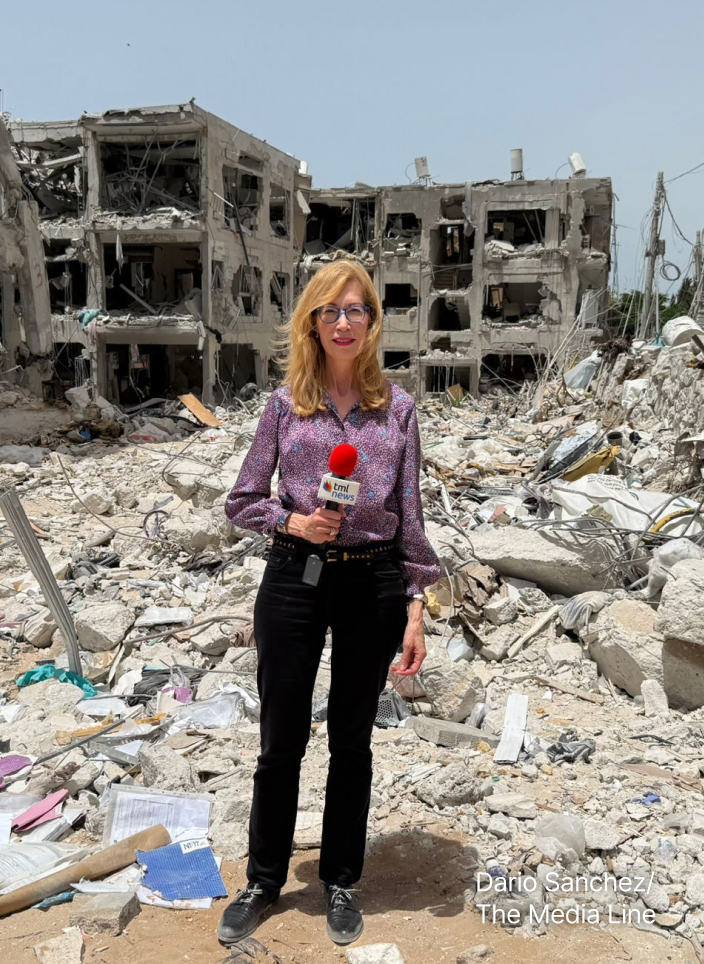While the focus has shifted to Hizbullah’s terror tunnels in the north, the situation in the south remains unstable and no concrete agreement has been forged with Hamas
The launch of Operation Northern Shield to uncover and destroy Hizbullah’s network of cross-border tunnels contextualizes the Israeli government’s decision last month to swallow some tough pills and a little pride in order to avert full-blown conflict against Hamas. At the time, Prime Minister Binyamin Netanyahu, under significant political and public pressure, spoke cryptically of Israel already being engaged in a military campaign and that an “unnecessary war” in the Gaza Strip would derail this undefined endeavor.
While the move was still panned by an overwhelming majority of Israelis and led to the resignation of defense minister Avigdor Liberman—who called the choice a “capitulation to terror”—it is now clear that Netanyahu, with the backing of the military, was prioritizing the northern threat that evidently demanded immediate action.
That plans to destroy Hizbullah’s terror tunnels were discussed during security meetings ahead of a final decision on Gaza dispels the notion that the premier is acting out of political interest in order to deflect attention away from the criminal investigations against him. His trip to Brussels on Monday to provide advanced warning of the IDF operation to American Secretary of State Mike Pompeo reinforces that current developments have been weeks-in-the-making.
There is little argument among analysts that Hizbullah poses a far greater danger to Israel than Hamas. Indeed, Netanyahu over the past two months repeatedly has warned that Iran’s Lebanese terror proxy is constructing underground factories capable of producing precision-guided missiles that can target critical infrastructure anywhere in Israel.
Notably, the prime minister described Operation Northern Shield as a “small piece of the big picture of our efforts and actions to ensure security on all fronts,” a comment construed as an indication that the mission may be a precursor to confronting what is viewed as the more acute threat of Hizbullah’s arsenal of some 120,000 projectiles.
Give the gift of hope
We practice what we preach:
accurate, fearless journalism. But we can't do it alone.
- On the ground in Gaza, Syria, Israel, Egypt, Pakistan, and more
- Our program trained more than 100 journalists
- Calling out fake news and reporting real facts
- On the ground in Gaza, Syria, Israel, Egypt, Pakistan, and more
- Our program trained more than 100 journalists
- Calling out fake news and reporting real facts
Join us.
Support The Media Line. Save democracy.


Then there is the broader and more important strategic goal of curbing Tehran’s regional expansionism—foremost its effort to establish a permanent military presence in Syria—as well as preventing its nuclearization.
Accordingly, Israel’s decision-making process and related courses of action appear well-calculated and correct.
Which would be truer if the situation in Gaza was actually stable.
In fact, news about the diplomatic push to achieve a cease-fire agreement between Israel and Hamas has conspicuously disappeared from the headlines. It seems that the Egyptian-, Qatari- and United Nations-mediated negotiating process has reached a standstill and, instead, the parties have resigned themselves to the return of the longstanding status quo of “quiet-for-quiet.”
“We are slowly moving back to some sort of regularization that re-establishes the rules of the game set following Operation Protective Edge, [the 50-day war in 2014],” Brig. Gen. (res.) Yossi Kuperwasser, formerly the director general of Israel’s Ministry of Strategic Affairs and presently head of the Project on Middle East Developments at the Jerusalem Center for Public Affairs, explained to The Media Line.
“A long-term cease-fire, however, is not realistic because Hamas is unwilling to give up its jihadist identity and its rule over Gaza. Because of this, they are not ready for the type of truce that includes serious conditions.”
But while rockets are not indiscriminately raining down on Israeli civilian centers, the so-called “March of Return” protests nevertheless are ongoing and one incident along the border can easily enflame tensions. Additionally, there is always the possibility of external interference, as the mullahs in Tehran might be tempted to instruct their Palestinian proxies in Gaza to resume terror operations with a view to diverting Israel’s military focus from north to south.
Moreover, the IDF undoubtedly will continue to monitor and pursue objectives in the Palestinian territory, which carries the risk of a botched operation similar to that of November 11, when an elite Israeli unit was identified three miles deep in Gaza. The ensuing firefight killed one senior IDF officer and seven Hamas members and was a catalyst for the next day’s largest-ever 24-hour barrage of some 500 missiles fired into Israel.
“The Israeli government has not forgotten about Gaza but right now the overall situation is more under control. There is Qatari money and fuel going in so things are less sensitive,” Brig. Gen. (res.) Nitzan Nuriel, former director of the Counter-Terrorism Bureau at the Israeli Prime Minister’s Office and prior to that deputy commander of the IDF’s Gaza Division, explained to The Media Line.
“A long-term cease-fire would be a ‘win-win’ scenario and create a totally different environment but this cannot happen yet because of [the intra-Palestinian divide and Mahmoud Abbas’ refusal to re-assume control over Gaza so long as Hamas retains its weapons.] However, the current Hamas leadership knows two things: namely, that they will not be able to defeat the state of Israel and that compromises will need to be made.
“In the long-run,” he therefore concluded, “solutions will be found. Until then, there can always be mistakes that could lead to another round of violence.”
The interplay of so many variables and competing interests means the Gaza conundrum remains as complex and potentially volatile as ever. Many argue that absent formal understandings between the sides, accompanied by an international plan for improving the humanitarian conditions in the enclave, the Gaza powder keg is bound to be reignited.